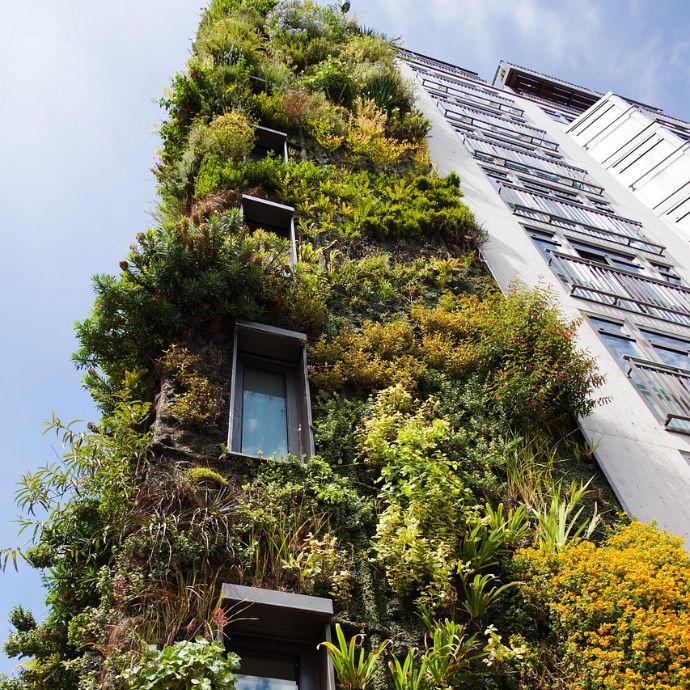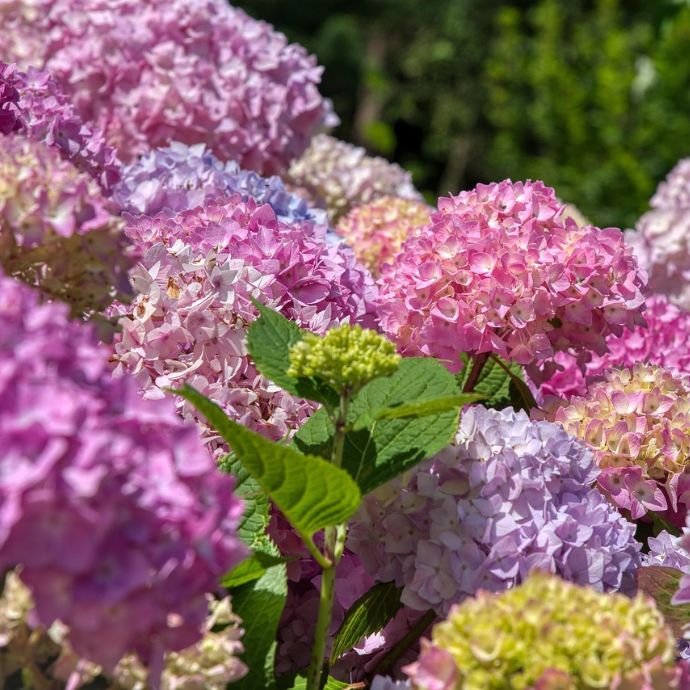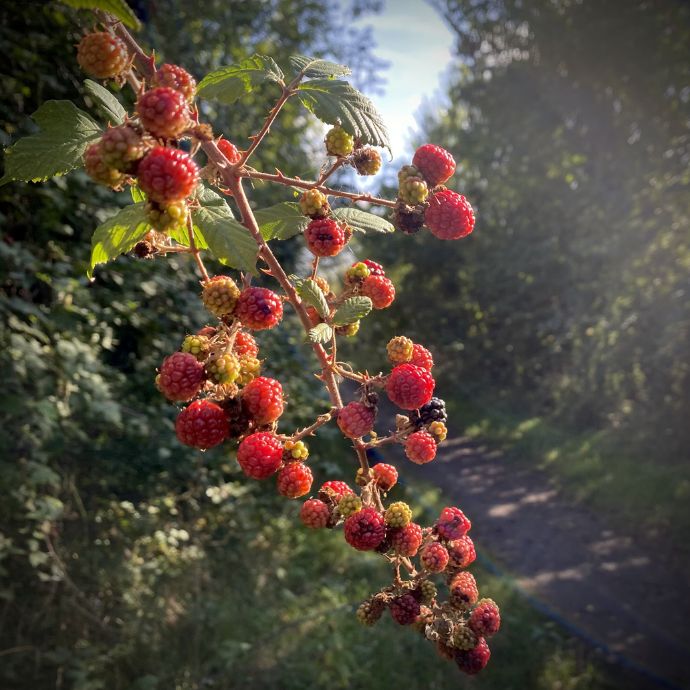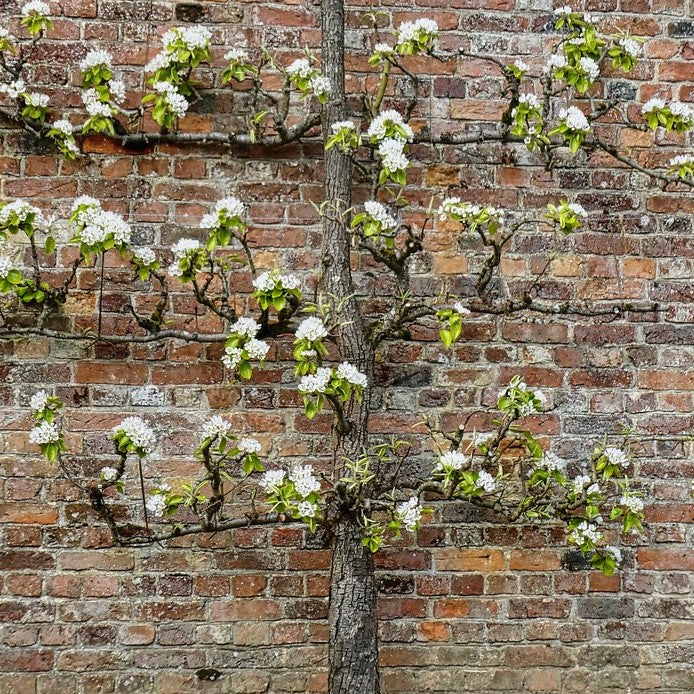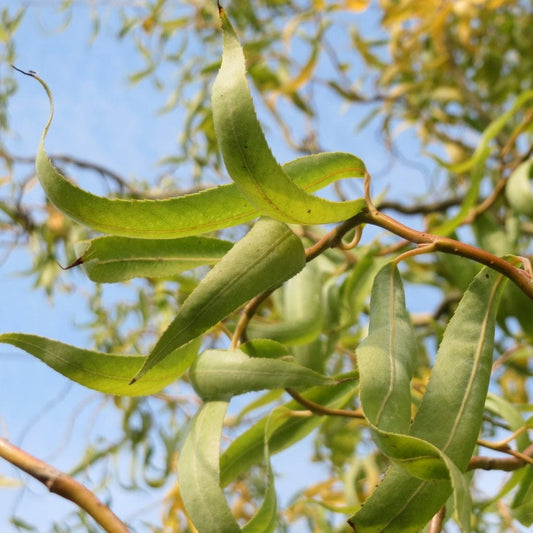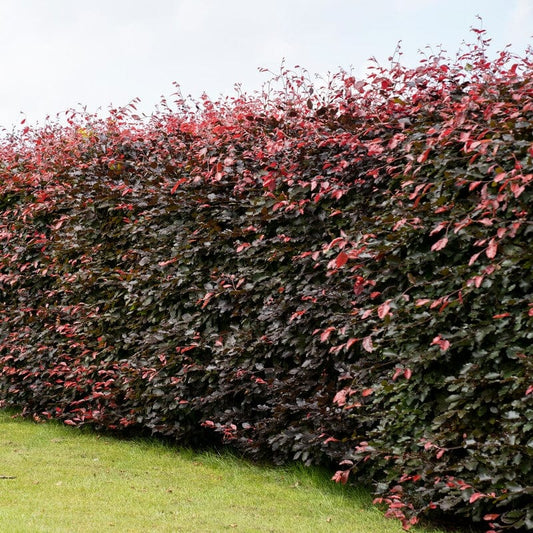How to Plant a Hedge
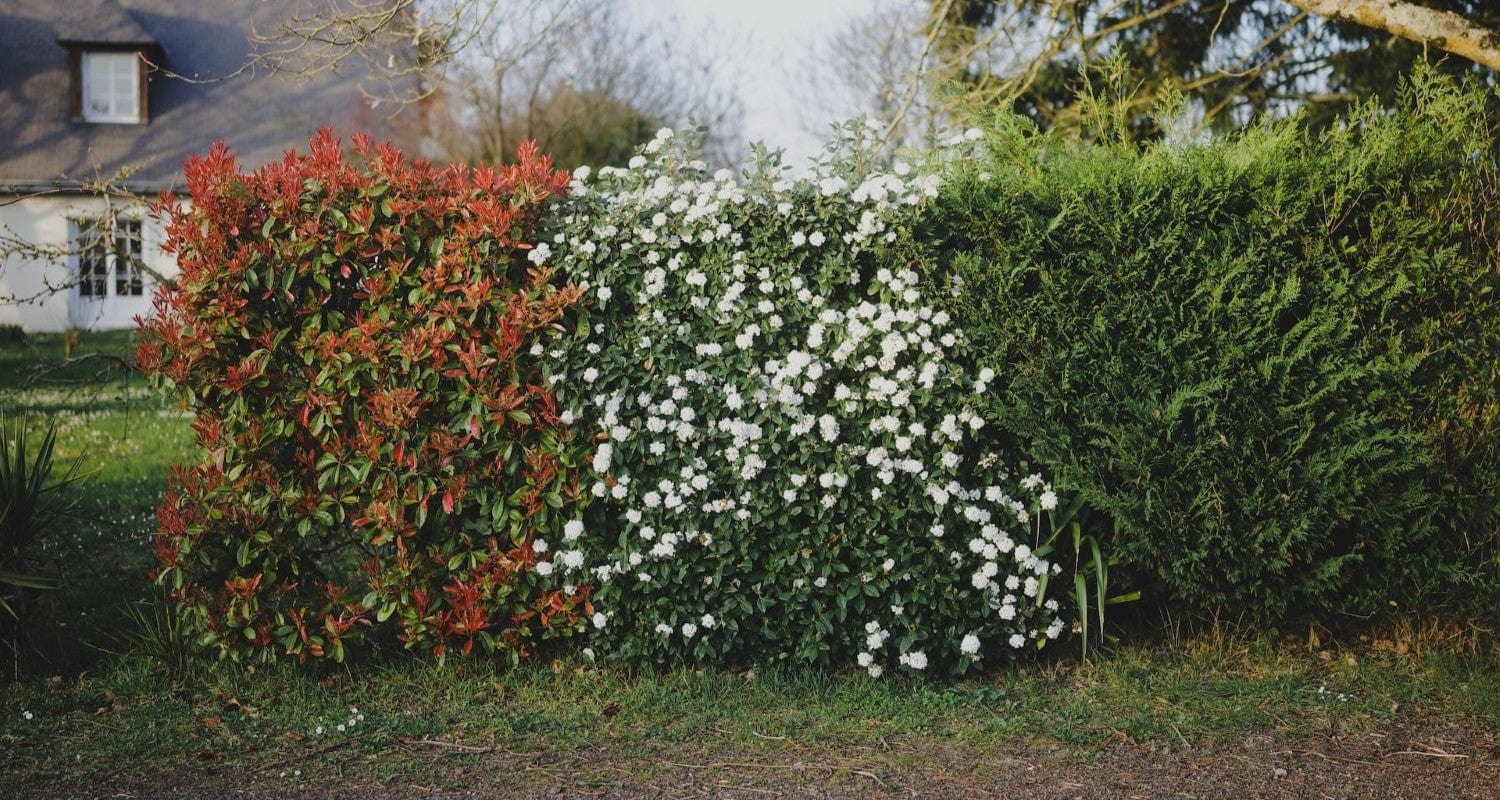
Hedges are the more attractive, wildlife friendly and sustainable way of creating garden boundaries. They reduce noise, improve privacy and won’t blow down in a storm like fences can. So far so good, but do you know how to plant a hedge? We asked our growers to share their knowledge and distilled it into this easy hedgerow planting guide. Follow these steps and you can’t go wrong!
Jump to:
- Choosing your hedge plants
- Two rows or one?
- Growing a hedge against a fence
- Planting your hedge
- Bare root vs potted hedging
- After care
- Growers’ top tip
Choosing your hedge plants
What do you want your hedge to do? If you need privacy ASAP, go for fast growing evergreens like Privet or Leyland Cypress. Deciduous hedges offer less privacy as they’re not so dense and lose their leaves in autumn, but they can provide more year-round interest and offer an effective barrier if you choose thorny plants like hawthorn and blackthorn. Do you want flowers, edible fruit or wildlife appeal? A hedge can do all of this - take a look at our growers’ packs for every purpose if you’re unsure. You can even find plants that thrive in exposed coastal locations.
A hedge doesn’t have to be just one type of plant either - mixing and matching them for a looser, more informal hedge produces an attractive effect if visual appeal is high on your priority list. If you’re unsure what will work well in your garden, look around the neighbourhood and see what kinds of hedges are thriving in the local climate and soil.

Two rows or one?
If you’re planting in a double row, you’ll need to leave a lot more space for your hedge. Why a double row? There are several benefits: the hedge will be stronger because the wind will be able to blow through the gaps, it provides a denser habitat for wildlife and any noise or pollution reduction you’re aiming for will naturally be doubled. If you’re planting a deciduous or slow growing hedge, it will also look less bare in the autumn while it’s getting established. For a double row, we recommend using five to seven plants per metre for small plants (under 1.2m), three to five plants per metre for medium height plants (1.2m to 1.5m) and three plants per metre for tall plants (over 1.5m). You should leave about 40cm between the rows.
Growing a hedge against a fence
If you have an existing fence, planting a hedge against it is a great way of strengthening the fence while adding visual appeal and helping your garden wildlife at the same time. To make sure the hedge has space to grow, you’ll need to leave a space of about 75cm-1m between the fence and the hedge - this also goes for walls and railings.

Planting your hedge
First of all, you’ll need to prepare the soil. Look up how many plants you should use per metre (you can find this on each of our hedge plant pages) and make sure the strip of land you’ve chosen is long and wide enough. Once you’re happy with the size, remove any weeds and large stones from the ground and break it up with a spade or fork. If your soil is very sandy or stony, you can improve it by mixing in plenty of compost or well rotted manure. Similarly if you have a heavy clay soil, you can improve the drainage by mixing in gravel or perlite.
Now you’re ready to plant, it’s a good idea to use a gardening line - you can buy these, but they’re basically just two sticks with twine between them - to measure a straight line in the ground. Position the sticks at each side of your row, stretch the twine tightly to create a nice straight line and plant your hedge plants against it at equal intervals.
Bare root or potted?
You can buy hedge plants as bare root or potted plants and each needs a slightly different method of planting. We’d advise you to buy bare roots for planting in autumn or winter (the best time of year) and potted plants in spring and summer (handy if you need to fill in a gap!).
How to plant bare root hedge plants
Most hedge plants will come as bare roots. These are only available in the dormant season (November to March) and should be planted as soon as possible after you receive them. If that’s not possible, don’t worry - they will be fine for up to a week kept in a cold shed or garage but make sure the frost doesn’t get to them (once they’re in the ground, frost isn’t a problem). If you still can’t plant your hedge after a week, stand the roots in a bucket of water overnight so that they don’t dry out. You can also temporarily plant them in a large bucket of compost or soil and keep it in a sheltered place outdoors until they can be moved to their final position.
Before planting, soak the roots in a bucket of water for a minimum of two hours. Then when you’re ready, dig a hole approximately 40-60 cm deep and wide for each plant. Add some well rotted manure or garden compost. Position the plant upright in the centre of the hole, fill it in and firm down the soil well, then give it a good watering.

How to plant potted hedge plants
Unless the ground is very dry, frozen or waterlogged, you can plant potted hedge plants at any time of year. If the ground isn’t ready for planting, you can simply keep them in their pots until it improves. Before removing your plants from their pots, give them a good watering. Dig a hole 40-60cm wide and deep for each one - you can add well rotted manure or compost to improve the soil at this point. Remove each plant carefully from its pot and position in the centre of the hole, making sure you plant it so that the soil level is the same as it had in the pot. Fill in the soil and firm it down well before watering in.
Caring for your new hedge
Until your hedge has developed a strong root system (this will take about a year), you’ll need to water it regularly, especially in dry or windy weather. As it matures, it will develop some drought tolerance, but should still be watered in summer. Add some general purpose fertiliser when you plant, and again each spring.
You should also mulch the whole planted area with bark chips, compost or similar, to lock moisture in the young roots, protect them from very cold temperatures and keep weeds down - a layer of about 5-7cm is enough, but make sure you leave a space around the trunk or main stem, to allow air to circulate and prevent rot.

Growers’ top tip
Keep checking on your new hedge plants throughout the winter - after a storm this is especially important, so that any damage can be seen straight away. Cold winds can damage or kill young roots, so make sure they’re well covered by mulch, and replace this if the wind blows it around. If your plants have shifted position due to wind or storms, just straighten them up again and firm down the soil around them really well.
Last updated: 13/11/2023

